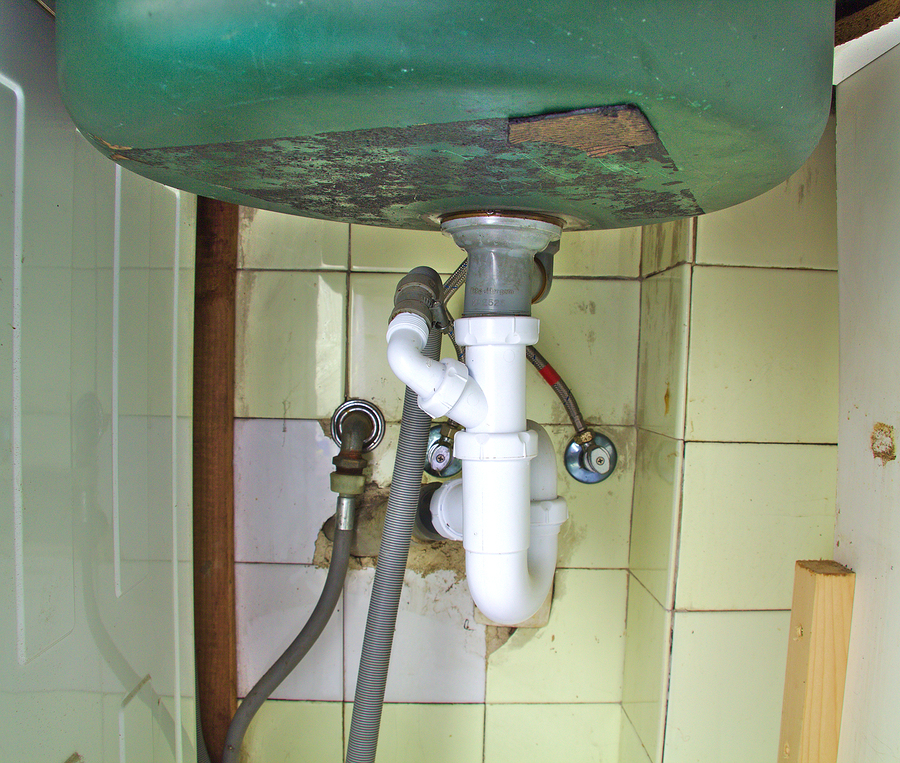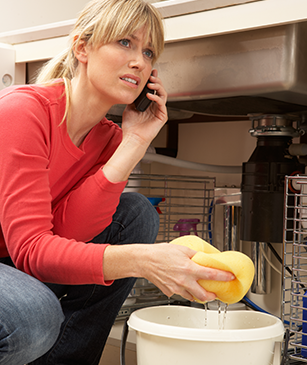We've noticed the article relating to Why Is My Garbage Disposal Leaking From the Bottom? directly below on the web and thought it made good sense to talk about it with you on my blog.

Garbage disposals are essential kitchen area devices that aid in taking care of food waste successfully. Nonetheless, a leaking garbage disposal can be an aggravating and untidy trouble to deal with. Fortunately, lots of leakages can be taken care of conveniently with a couple of straightforward steps. In this article, we will certainly discuss how to take care of a dripping waste disposal unit successfully.
Intro
Waste disposal unit are mounted under kitchen area sinks and are developed to shred food waste into smaller pieces, permitting it to travel through the pipes system easily. While these tools are normally reliable, leakages can happen over time as a result of deterioration, loose links, or damage to the device.
Step-by-Step Guide to Dealing With a Leaking Waste Disposal Unit
Shut off the Power
Before trying any fixings, guarantee that the power to the waste disposal unit unit is shut off to stop the risk of electrical shock.
Situate the Leak
Determine the precise area of the leak and figure out the reason
Tighten up Connections
Use a wrench to tighten up any kind of loosened connections between the disposal system and the pipes system.
Change Seals or Gaskets
If the leakage results from worn seals or gaskets, remove the old components and replace them with brand-new ones.
Patching Splits or Openings
For splits or openings in the disposal device, usage epoxy or a suitable patching material to seal the damaged area.
Identifying the Resource of the Leak
Before attempting to deal with a dripping waste disposal unit, it is important to determine the resource of the leakage. This can usually be done with visual examination or by performing easy examinations.
Visual Inspection
Evaluate the waste disposal unit system thoroughly for any indications of water leakage. Pay very close attention to areas around seals, gaskets, and link factors.
Evaluating for Leaks
One means to evaluate for leakages is by running water with the disposal device and looking for any noticeable signs of leakage.
Usual Reasons For Leakages in Trash Disposals
Worn Seals and Gaskets
Seals and gaskets play an important role in stopping water from leaking out of the garbage disposal. With time, these components can degrade, bring about leaks around the disposal system.
Loose Links
The links in between the garbage disposal and the pipes system can become loose in time, triggering water to leak out during procedure.
Cracks or Holes in the Disposal Unit
Physical damage to the garbage disposal, such as cracks or holes in the housing, can also result in leaks.
Tools and Products Needed for Dealing With a Leaking Garbage Disposal
Prior to starting the repair service process, gather the necessary devices and products, including a screwdriver, adjustable wrench, plumber's putty, substitute seals or gaskets, and epoxy or patching material for fixing cracks or openings.
Checking the Garbage Disposal After Repair
As soon as the repair work is complete, examine the waste disposal unit by running water through it to make certain that the leakage has actually been settled.
Preventive Maintenance Tips to Stay Clear Of Future Leaks
To avoid future leakages, it is important to execute normal maintenance on your waste disposal unit. This consists of maintaining it clean, staying clear of putting non-food things or hard items down the disposal, and occasionally looking for leaks or other concerns.
Conclusion
To conclude, dealing with a dripping garbage disposal is a relatively simple procedure that can be finished with standard tools and materials. By following the steps described in this post and practicing preventative upkeep, you can maintain your waste disposal unit in good working problem and prevent expensive fixings in the future.
HERE’S HOW TO FIX YOUR GARBAGE DISPOSAL
WHAT TO DO IF SOMETHING IS STUCK IN YOUR GARBAGE DISPOSAL
If the impeller won’t turn, there’s probably something stuck in the disposal. It could be a steak bone or peach pit, although plumbers report pulling all sorts of inappropriate objects out of disposals, such as bottle caps or aluminum foil. Make sure power to the disposal is off, and look inside to see if you can see the source of the jam.
Never stick your fingers in a disposal. Pull out anything you see with tongs or pliers.
If the disposal still won’t work, it may be time to call a plumber or consider buying a new disposal. GEM Plumbing & Heating is here for all of your garbage disposal needs.
WHAT TO DO IF YOUR GARBAGE DISPOSAL DRAIN IS CLOGGED
Take everything out from underneath your sink and put a bucket or other container under your disposal to catch any water that drains out. Disconnect your disposal from the power supply. If it’s plugged into a wall outlet, unplug it. If it’s hardwired into an electrical box, go to the electrical panel and turn off the breaker for the disposal. Pour ¼ cup of baking soda into the drain, followed by ½ cup of white vinegar. Give the solution a few minutes to fizz and do its work. Look into the disposal with a flashlight to see if you can see an object that might be causing the clog. If you see it, remove it using tongs or pliers. MORE TIPS ON DEALING WITH A CLOGGED GARBAGE DISPOSAL
Never use drain cleaner in a garbage disposal. It can damage the plastic parts inside the disposal. You can also be splashed with the caustic liquid while working to clear the clog. Beware! Never stick your fingers into a garbage disposal. Trust us — not a good idea. In many instances, your dishwasher drains through your garbage disposal. This allows the disposal to grind any large food particles that may be drained out of your dishwasher. There are some jurisdictions, however, where the plumbing code prohibits such a connection. WHAT TO DO WHEN YOUR DISHWASHER DRAINS THROUGH THE DISPOSAL
Run some water in the sink so your plunger has at least a ½-inch of water to create a seal and plunge vigorously up and down several times. You may need to repeat this several times. Run hot water down the drain to clear any residue that remains.

Do you appreciate reading up on Why Is ? Create a remark below. We will be pleased to hear your opinions about this blog posting. In hopes that you come back again before long. Sharing is nice. Helping people is fun. Thank you so much for going through it.
Details